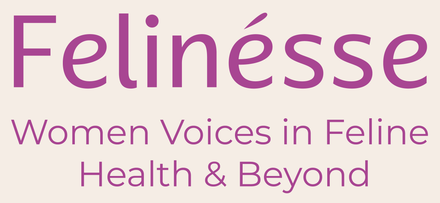Everyone deserves a good night's sleep; this is especially true for older cats. As your furry friend approaches her senior years or is recovering from an injury, it’s time to consider getting them a new orthopedic cat bed.
As cats age, their body tends to lose muscle tone, circulation diminishes, and healing starts to slow down. At this point in his life, providing your friend with a cushioned place to relax and rest is crucial to his well-being.
Why Your Senior Cat Needs An Orthopedic Bed
Senior cats, like all older animals, can develop a variety of age-related conditions that can affect their mobility and comfort. One of the most common of these conditions is arthritis, which is an inflammation of the joints. As the cartilage that cushions the joints wears down over time, the bones of the joints can rub against each other, causing pain and inflammation.
An orthopedic cat bed is designed to provide extra support and cushioning for the joints. It can help ease some of the pain and discomfort associated with arthritis and other age-related conditions. It can also help prevent pressure sores and other problems that can develop as a result of lying on hard surfaces for long periods.
Additionally, orthopedic cat beds often provide more insulation. It can be a great benefit for older cats who have difficulty regulating their body temperature.
How Is An Orthopedic Cat Bed Different From a Regular Cat Bed?
Regular cat beds are usually soft and fluffy and have less supportive padding. They are not recommended for cats with joint or bone issues.
Some of the key features that set orthopedic cat beds apart from regular cat beds include the following:
- Supportive padding: Orthopedic cat beds have a thick layer of memory foam or another supportive material to cushion the cat's joints and provide pressure relief.
- Ergonomic design: Orthopedic cat beds are often designed with the cat's body shape in mind to promote proper alignment and comfort.
- Elevated edges: Some orthopedic cat beds have elevated edges that can provide extra support for the cat's head and neck.
- Durable and easy-to-clean material: Orthopedic cat beds are often made of higher-quality materials, like cotton or wool. That's easy to clean and maintain, to extend its durability and comfort.
Orthopedic cat beds are often recommended for older cats or those with arthritis or other joint conditions, as they can help to reduce pain and improve mobility. Yet, younger and healthy cats can also enjoy the extra support and comfort provided by an orthopedic cat bed.
What To Look For In An Orthopedic Bed For Older Cats
Bedding Material
When choosing bedding material for a cat bed, there are several factors to consider:
- Comfort: The bedding material should be soft and comfortable for your cat to sleep on. Many people choose materials like organic cotton or wool for this reason.
- Durability: The bedding material should be able to withstand regular use and washing.
- Allergies: Some cats may have allergies to certain materials, such as synthetic fabrics. Choosing organic and natural materials can reduce the risk of allergic reactions.
- Warmth: Some cats may prefer a warmer bedding material during cold weather. A bedding material like wool can provide insulation, keeping the cat warm.
- Ease of cleaning: The bedding material should be easy to clean and maintain.
- Cost: In general, organic materials are more expensive than synthetic materials. But they may be a good long-term investment and better for the cat's health and the environment.
At CatsEssentials, we only use organic materials for our beds because they are free from harmful chemicals and pesticides. These chemicals can be harmful to cats, especially if they are prone to respiratory issues or have a weakened immune system. Organic fabrics are also better for the environment because they are grown without the use of synthetic fertilizers and pesticides. They can harm soil and water quality. Additionally, organic materials are often considered to be more comfortable and durable than synthetic materials.
Supported Sides and Low Profile
A cat bed with supported sides and a low profile can provide extra comfort and support for older cats, particularly those with mobility issues.
Supported sides help keep the cat contained in the bed and can help the cat feel more secure and stable. This is especially helpful for cats with arthritis or other conditions that affect their balance and coordination. You can also opt for cat pillows, so your cat gets the neck support it needs.

A low-profile bed refers to a bed that has a low height to the ground, making it easier for cats to get in and out of bed. This is beneficial for older cats who may have trouble climbing into or out of high-sided beds or who have mobility issues. Additionally, a bed with a low profile can also make it easier for cats to maintain their balance while they are lying down.
It is worth noting that it is best if the bed is made of memory foam or egg crate-style padding. It will provide extra support for arthritic joints. On top of that, a removable and machine-washable cover helps keep the bed clean and hygienic.
Density Of The Bed For Pressure Point Relief
When choosing an orthopedic cat bed, it's important to consider the density of the bed's padding.
The density of the padding refers to how tightly packed the foam is. A higher-density foam will be more supportive and will hold its shape better over time. It makes a better choice for pressure point relief. A lower-density foam may be less supportive and may not hold its shape as well. Which could lead to less pressure relief for your cat.
In general, a density of at least 1.5 to 2 pounds per cubic foot is good for pressure point relief. This density range provides enough support to reduce pressure points while still being comfortable for the cat. Additionally, look for the thickness of the foam; it should be between 2-4 inches to provide enough support.
It is also worth noting that some orthopedic cat beds have additional layers of padding. Like memory foam on top of polyurethane foam, providing extra support and pressure relief.
It's important to keep in mind that the bed's density and thickness of the foam are not the only important factors. The design, shape, and material of the bed are also important when looking for pressure point relief.
What Makes Our Orthopedic Cat Beds Different
We use organic latex foam for our orthopedic cat beds. Organic latex foam, particularly GOLS-certified foam, is a great choice as it provides excellent support and pressure point relief. GOLS (Global Organic Latex Standard) is a certification that verifies that the latex used in the foam has been produced using organic methods and without the use of harmful chemicals.
Organic latex foam comes from the sap of the rubber tree and is a sustainable and eco-friendly option. It is naturally hypoallergenic, which can be beneficial for cats with allergies or sensitivities. Additionally, organic latex foam is durable and resistant to mold and mildew.
On top of that, our orthopedic cat beds feature an organic waterproof mattress cover. The zipper-removable and machine-washable cover is very useful to prevent unexpected accidents that could damage the organic latex. We also offer the option to choose the outer cover within a range of neutral and colorful tones. This can provide a stylish and aesthetically pleasing option for cat parents who want their pet's beds to fit in with their home decor.





